Property Newsletter | April 2024
Value of transactions up, volumes down in Northern Cape
As with many other parts of the country, the volume of transactions in the Northern Cape has declined since 2008, while the value of transactions has been on the increase – and the trend lines crossed each other in 2013.
There were almost 5 000 transactions in 1994, and this rose to just over 5 300 in 2007 before falling steeply to around 2 400 in 2009. After recovering some lost ground, volumes fell again from 2014 and ended 2023 at just under 2 300. The value of transactions, however, continued to rise to a high of R2.2b in 2021, before drifting back to R1.7b in 2023.
Northern Cape: value and volume of transactions
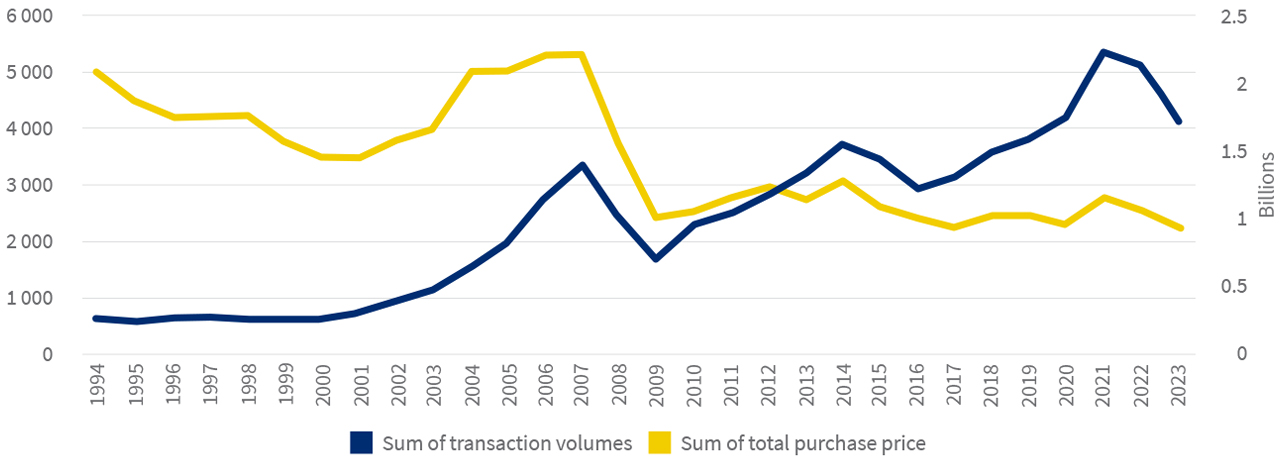
The graph below shows how the Northern Cape has moved from being a province almost exclusively dominated by property transactions below R500k to one in 2023, where of the 2 273 transactions, properties valued at more than R3m accounted for 49 transactions (2%), R1-R3m accounted for 817 (36%), R500k-R1m for 608 (27%), and under R500k for 799 (35%).
Northern Cape purchase price bands
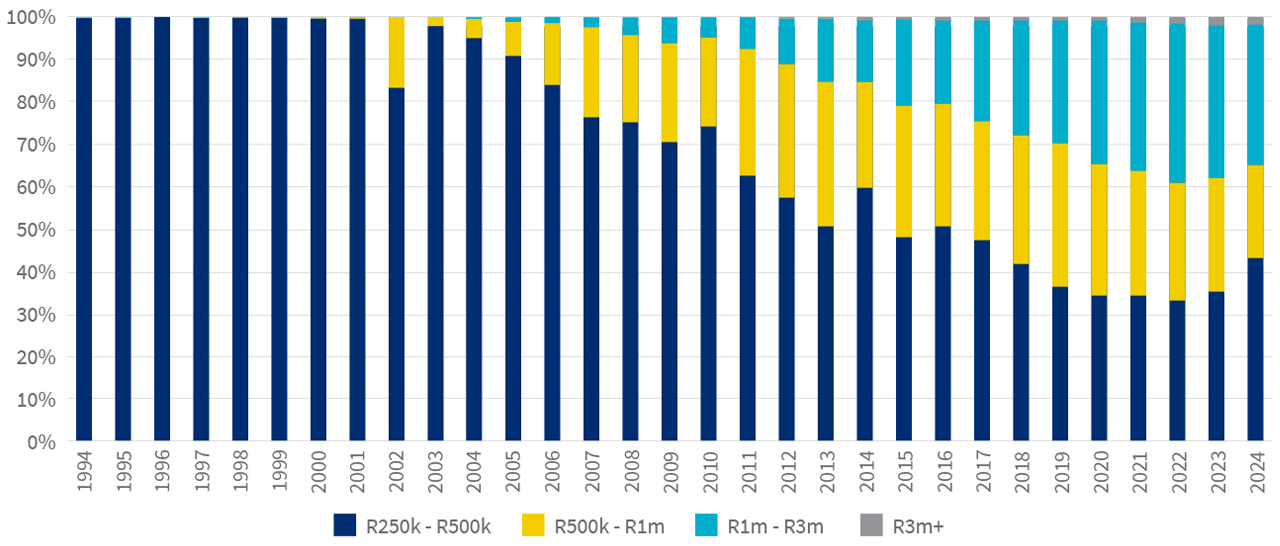
The bulk of properties (64%) registered at the Deeds Office in the Northern Cape at mid-April 2024, were valued at less than R500k, with 22% valued at between R500k and R1m, and 14% at between R1m-R3m. Properties valued at above R3m don’t move the statistically relevant dial!
Northern Cape: property value distribution of properties

The top 12 towns by volume of purchases: 1994-2024
Kimberly accounted for 40% of the purchases spread across the top 12 towns in the province, followed by Upington (14%) and Galeshewe (9%), a township outside Kimberley.
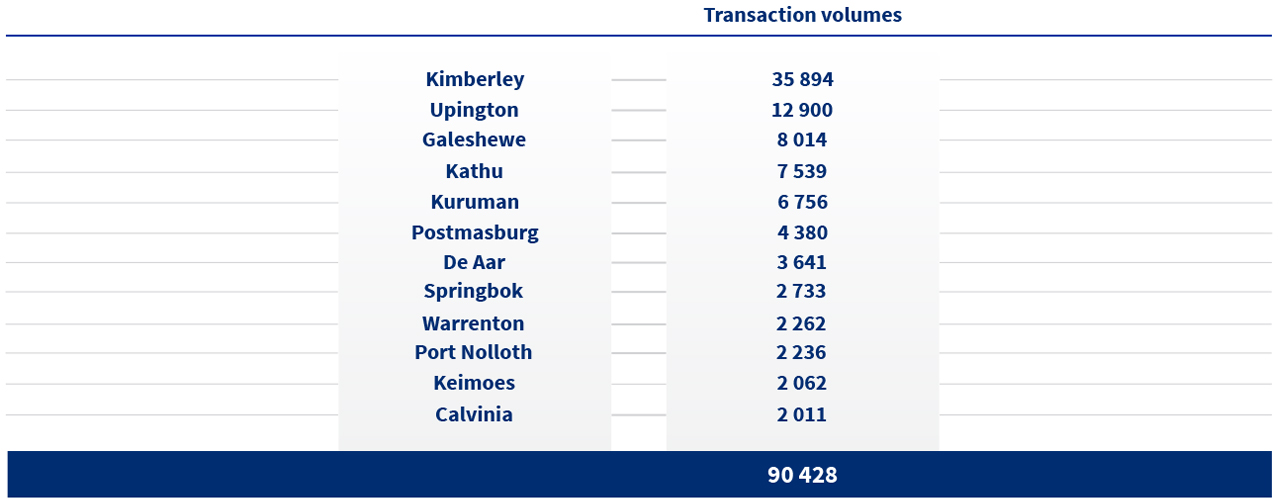
Development of residential properties
More than 10 000 residential properties were developed each year from 1994 to 1998, and then the numbers declined to just 1 971 in 2002. Development then picked up marginally until 2007, when a new low of 1 772 was reached. After another bubble of development, which reached a high of 4 281 in 2010, numbers fell away to just 428 in 2013 and have not climbed higher than 1 868 (in 2016) since then.
Of the just more than 125 000 properties developed since 1994, Freehold accounted for 97%, Estates 2.3% and Sectional Title 0.8%.
Development of residential units in the Northern Cape
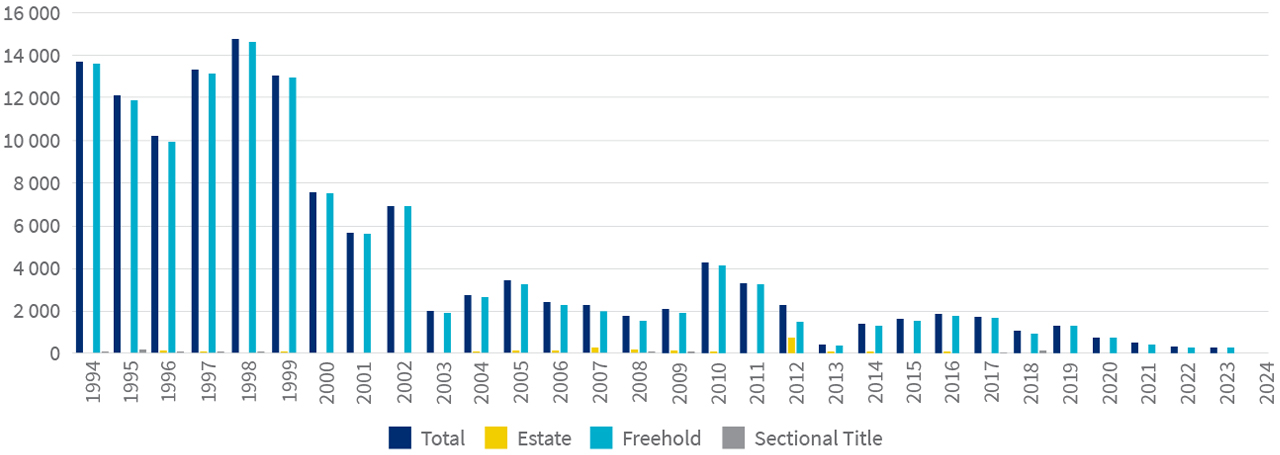
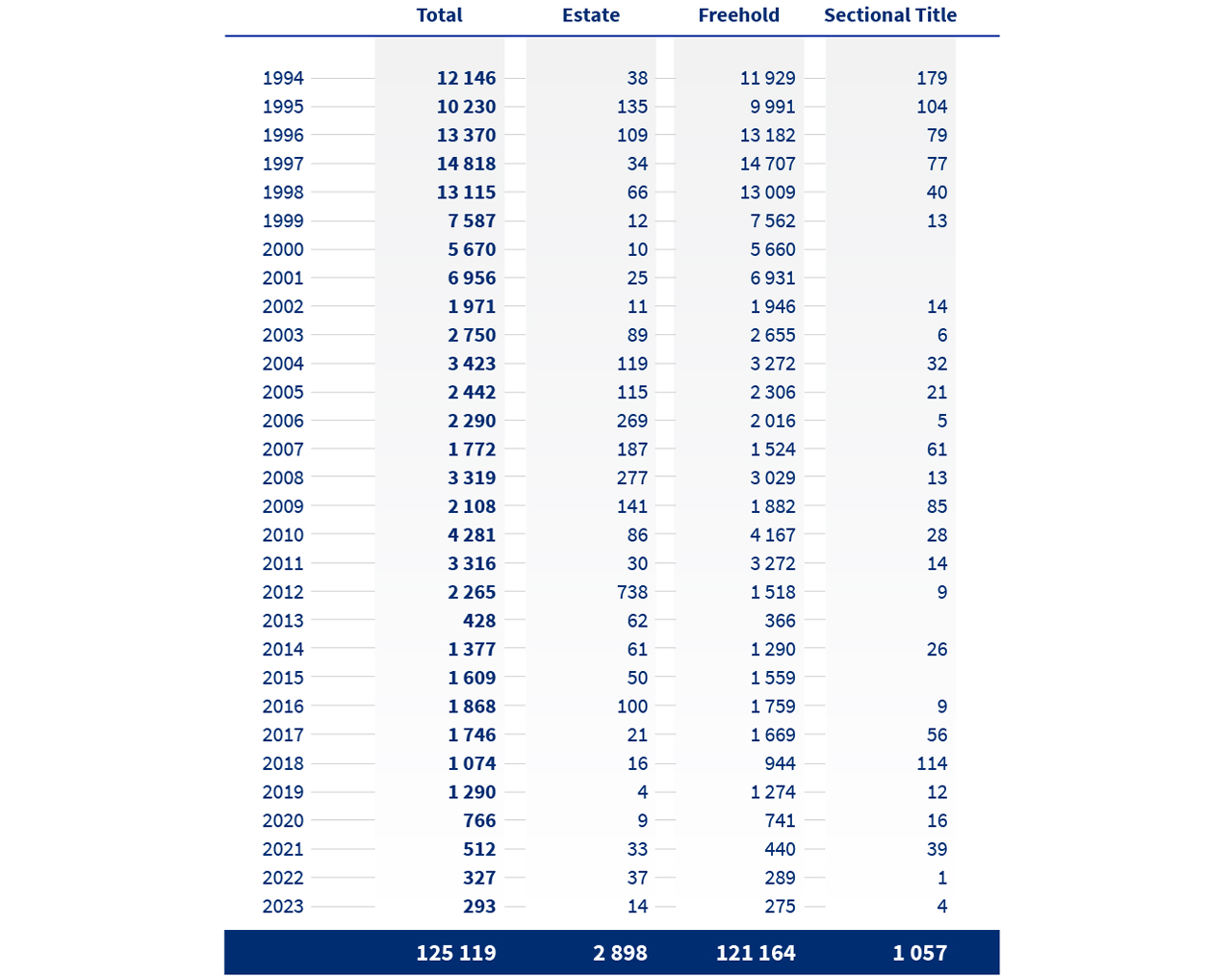
First time buyer favourites
Kimberley was comfortably the leader for first time buyers in 2018 and 2023, but Tsantsabane, in the north-east of the province, rocketed ahead in the early months of 2024. Tsantsabane is rich in minerals and the construction of Anglo American’s Kumba Iron Ore Kolomela Mine near Postmasburg has led to significant development of the area.
Kathu is another Northern Cape town which is home to a Kumba Iron Ore mine, and it was second choice for first time buyers in 2023. Around 52% of registered properties in Kathu, which means “town under the trees”, are valued at between R1.5m-R3m, with 33% in the R500k-R1m price band, 12% at less than R500k and just 3% above R3m.
Kathu was ahead of Upington (known for its export quality grapes, raisins and wines cultivated on the flood plains of the Orange River), Kuruman (known as “The oasis of the Kalahari” because of plentiful water which comes from the Eye of Kuruman, a geological feature that brings water from deep underground) and De Aar, (home to the railway junction between Cape Town and Kimberley).
Top towns for first time buyers 2018, 2023 and 2024

Finally, the graph below demonstrates that the vast majority of homes in the Northern Cape are Freehold, followed by Sectional Title and then Estates.
Northern Cape: volume of transactions by property type
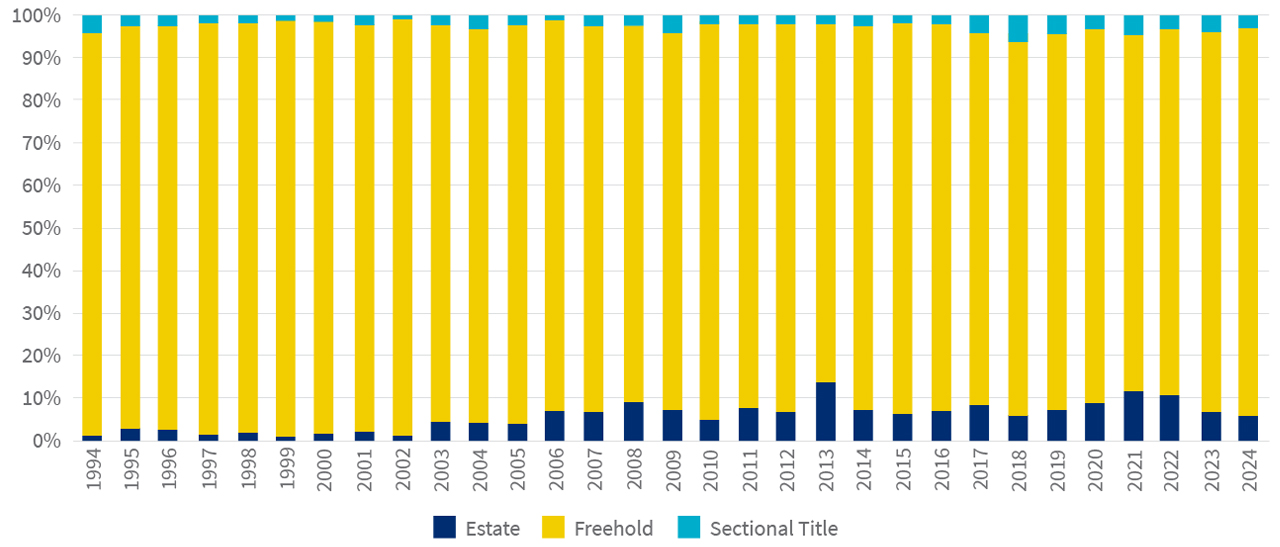

.png)
.png)
.png)
.png)